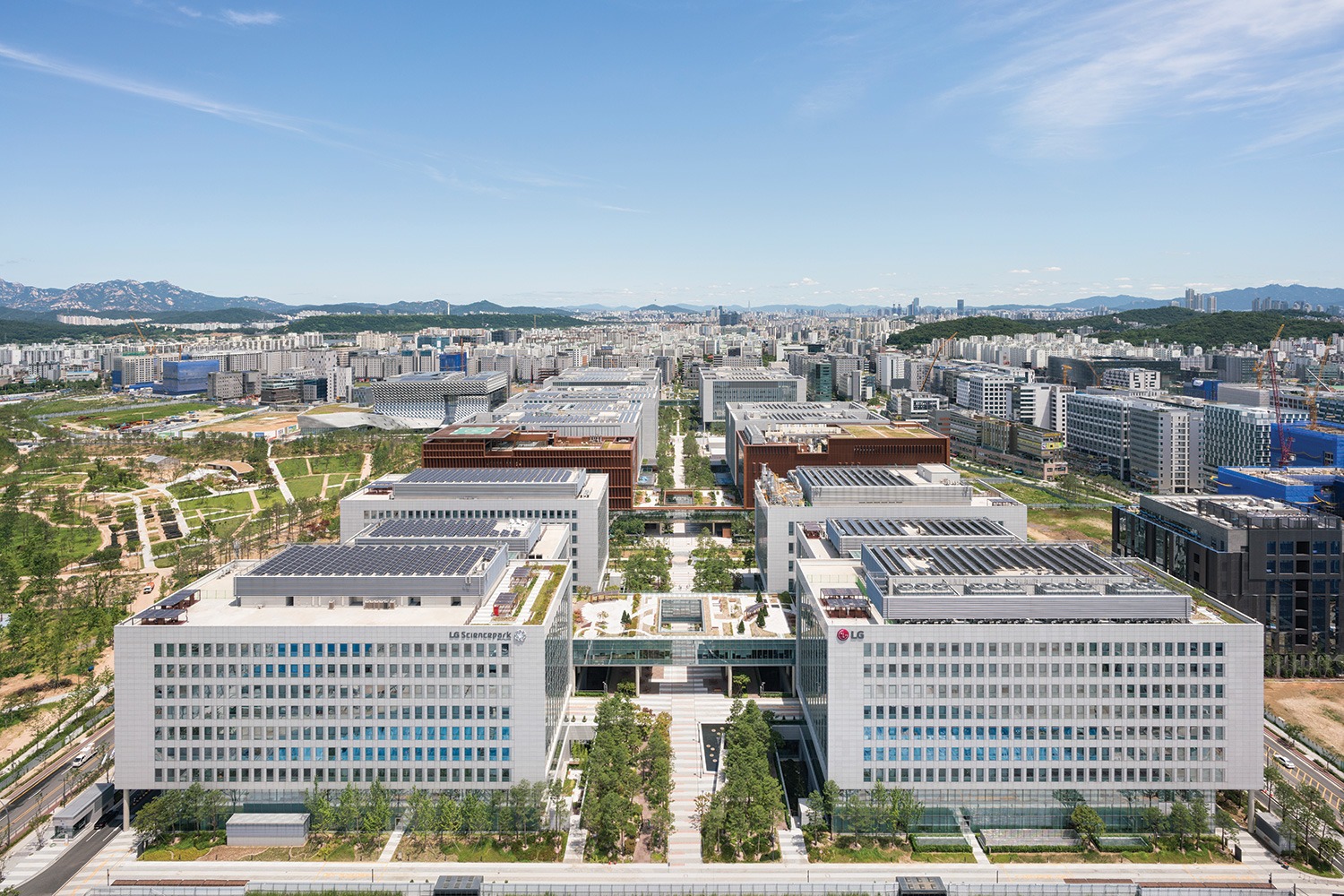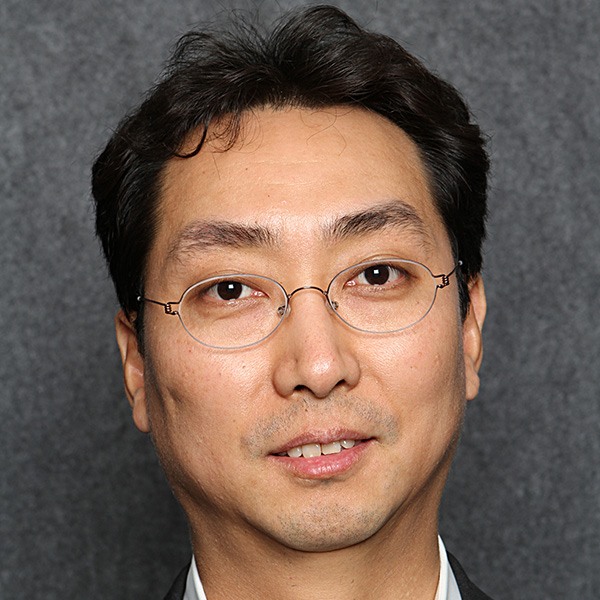The chairman of LG Group had a vision: Merge LG’s eight affiliate companies into a single research site in Seoul and infuse this next-generation campus with the company’s “innovation for a better life” esprit de corps.
That vision became reality in LG Science Park, a 26-building campus designed to inspire 24,000 LG researchers, engineers, scientists and visitors at work on tomorrow’s new products and discoveries. Located in Seoul’s R&D-focused Magok District, the campus is the world research headquarters for LG Group’s consumer electronics business and a new scientific hub for South Korea.
HOK’s design propels scientific breakthrough by stimulating the synergies among people, places and activities. Though it’s one of the world’s largest corporate research campuses, LG’s people have opportunities for interaction at four scales:
- Within individual labs.
- In lab neighborhoods.
- Via transparent atria that link lab neighborhoods and enable staff to make visual connections across large expanses of space.
- Through the entire collection of buildings joined by linear, landscaped parkways.
"All design decisions were made from the perspective of researchers, with research productivity and the synergy of fusion in mind. Here, LG will chart the right future for mankind.” — Ju-Hwan Shin , Managing director, LG Science Park Business Unit/Construction Drive Division
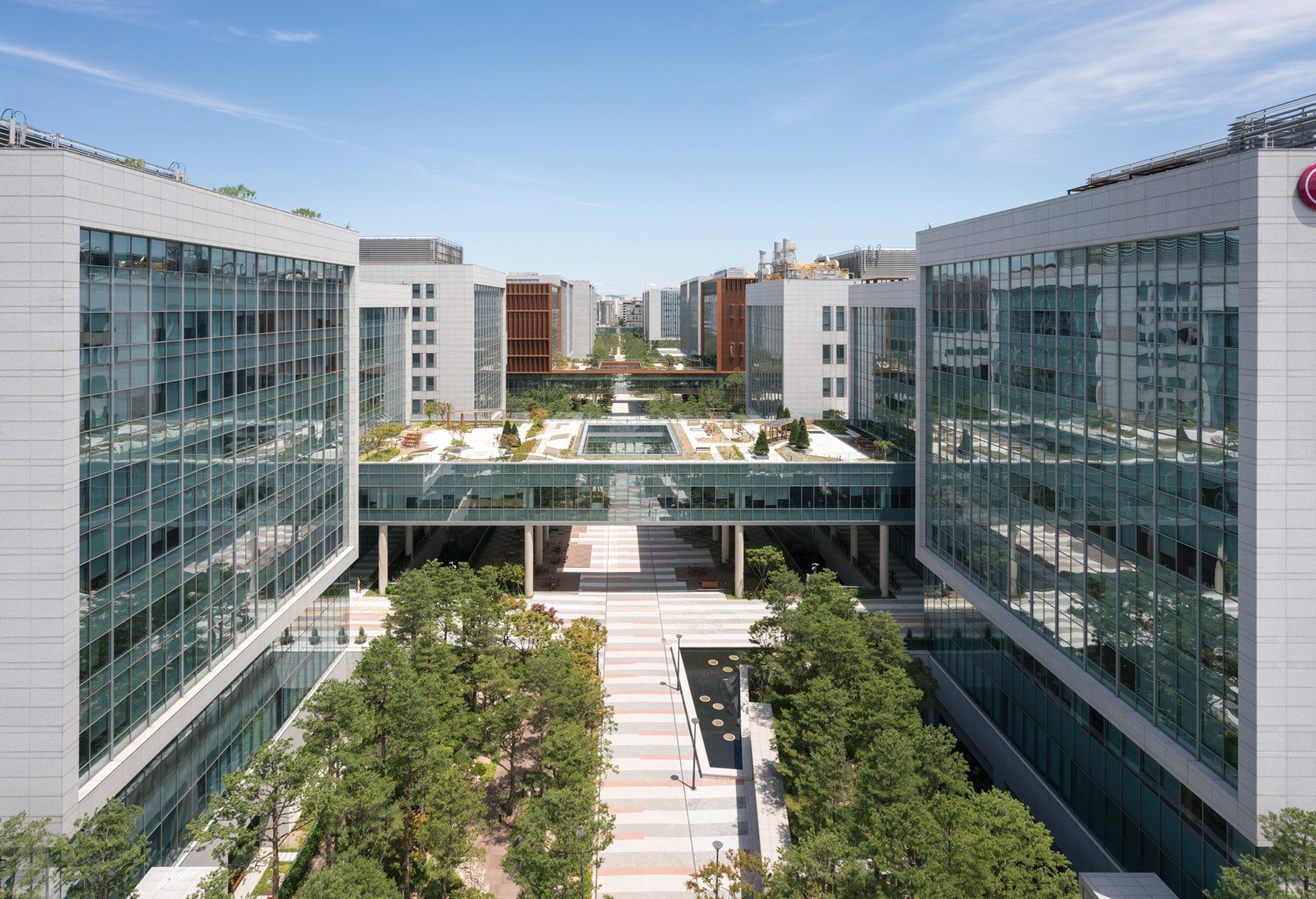
“Advanced Technology, Beautifully Designed”
Scientists and architects recognize that innovation emerges knowledge and imagination, which is why LG Science Park offers a mix of spaces for teamwork, individual reflection and discovery.
Developed in close collaboration with LG, HOK’s design mirrors the company’s aspirations to create “advanced technology, beautifully designed.” Individual buildings exhibit the same elegance of form as LG’s consumer products, which feature streamlined, elegant exteriors wrapped around cutting-edge technology.
From a distance the campus appears pixelated, with each building having its own identity and entrance. Closer inspection reveals the buildings also function as a cohesive whole, connecting to each other through ground-levelamenity spaces that appear to grow out of the landscape and third-floor bridges. The campus is also united by a landscaped promenade that serves as both a public park and gathering space for employees.
Timeless Design
Emphasizing LG’s minimalist approach to form, the post-and-beam, frame-based construction establishes a timeless feeling. Transparent ground-level spaces seamlessly connect the buildings to a new east-west linear park with plazas and gardens open to LG’s employees and the community.
Though the campus is unified, every component is distinct. Each LG business group has its own main entrance and lobby.
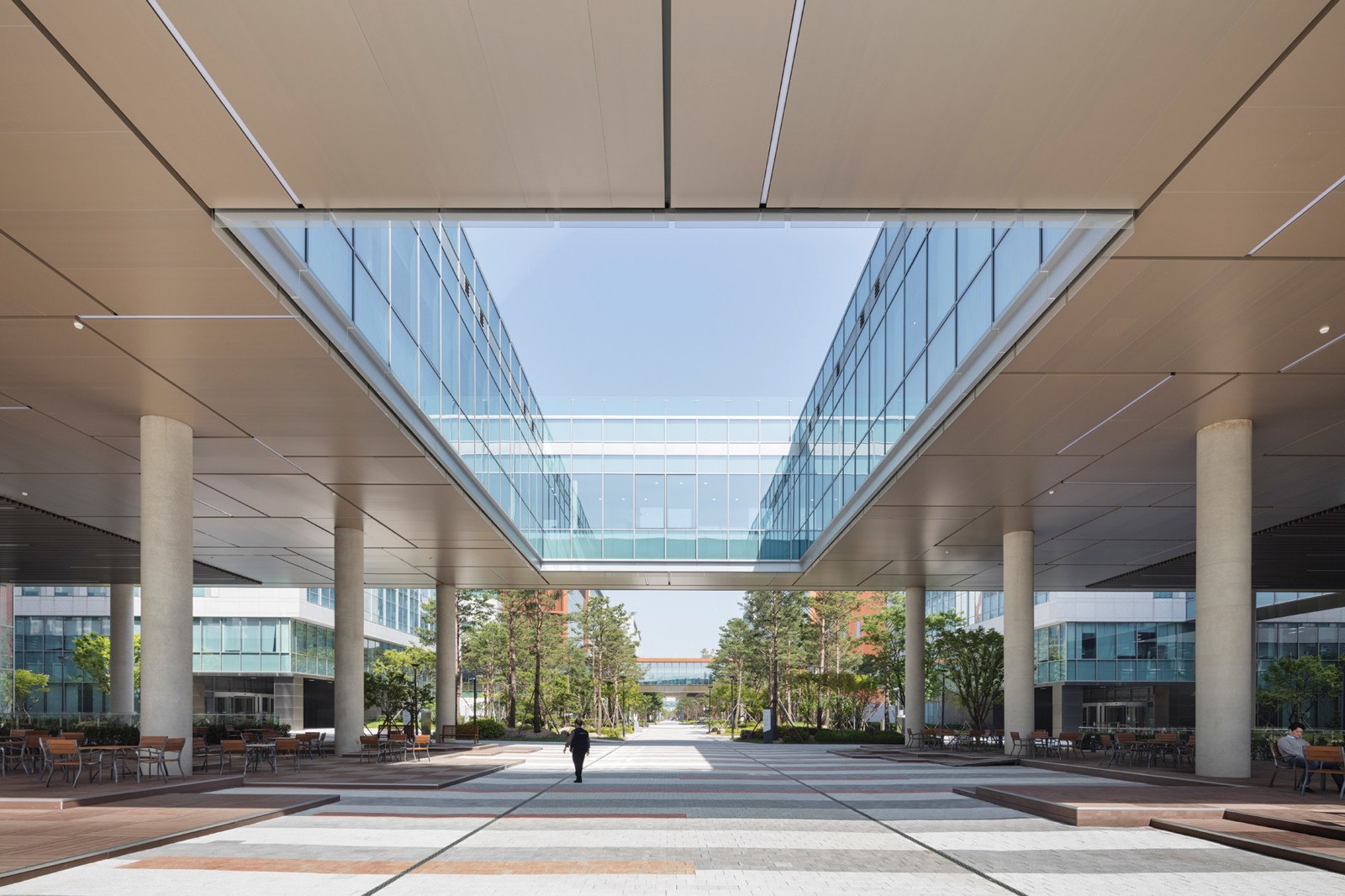
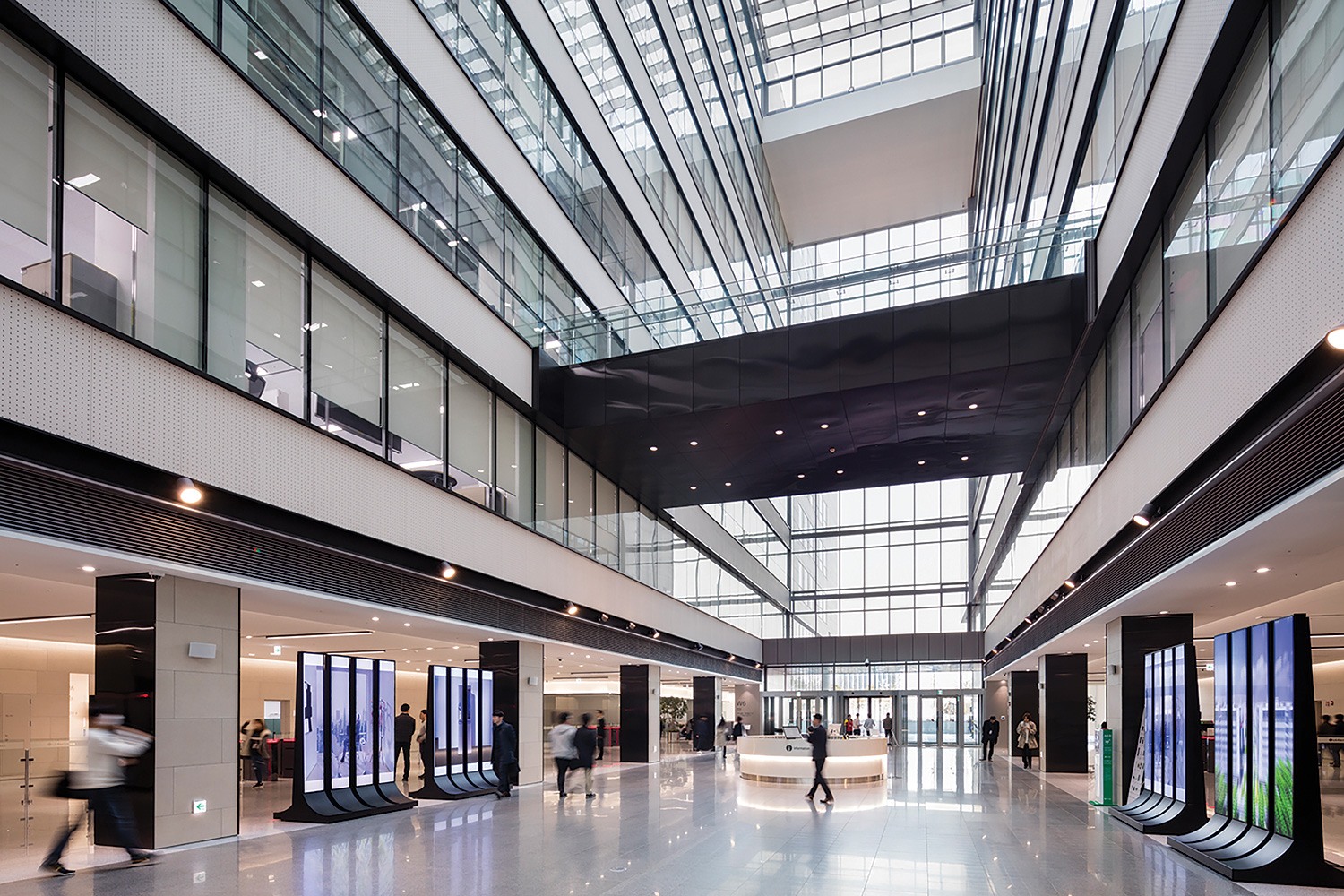
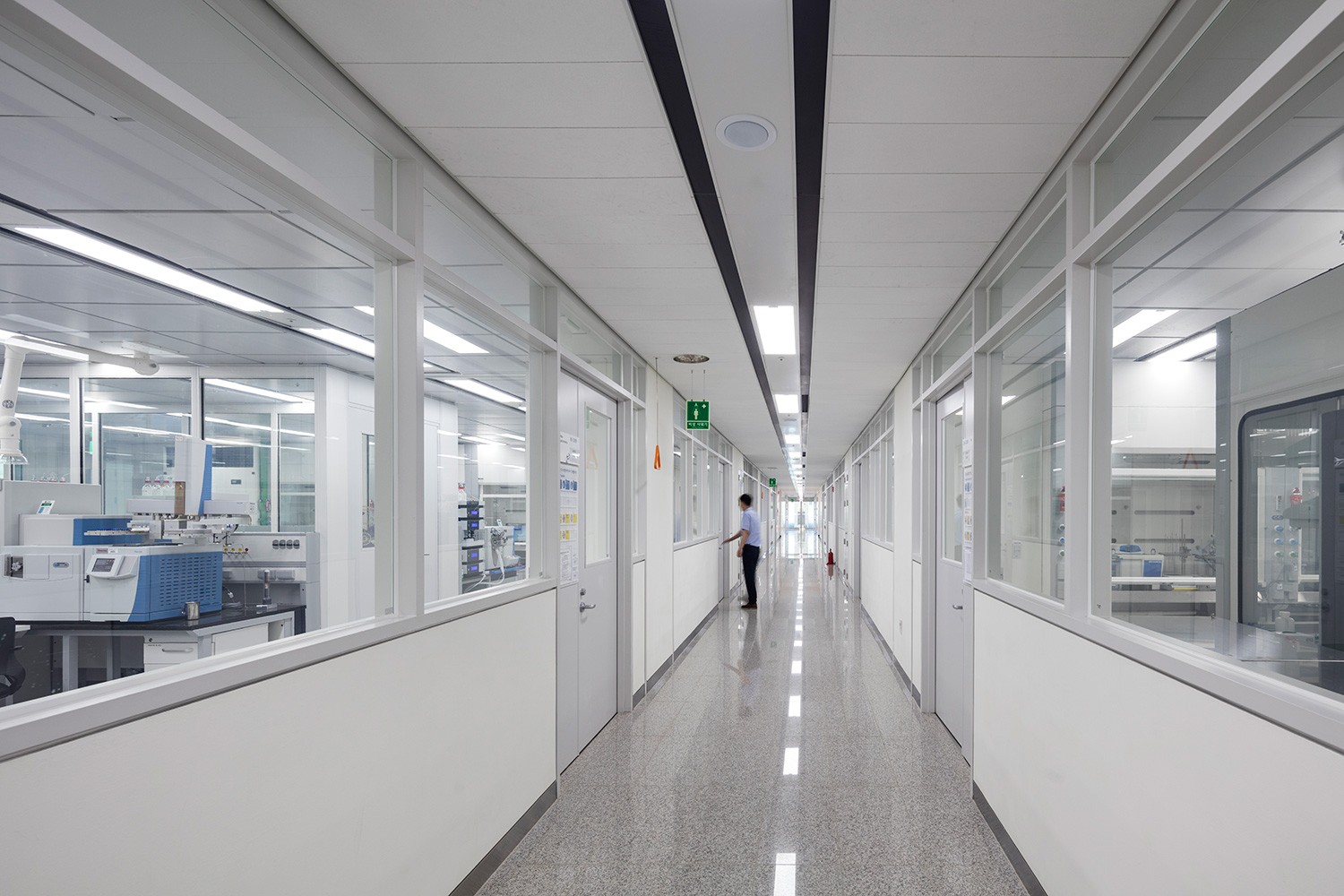
HOK designed LG Science Park’s labs to be highly flexible, allowing research teams to reconfigure the spaces quickly in response to new demands and research directions.
A dining hall beneath the promenade can serve 4,300 people per sitting, enabling employees from LG’s various research groups to interact and share ideas in an informal setting that offers access to daylight and views onto sunken gardens.
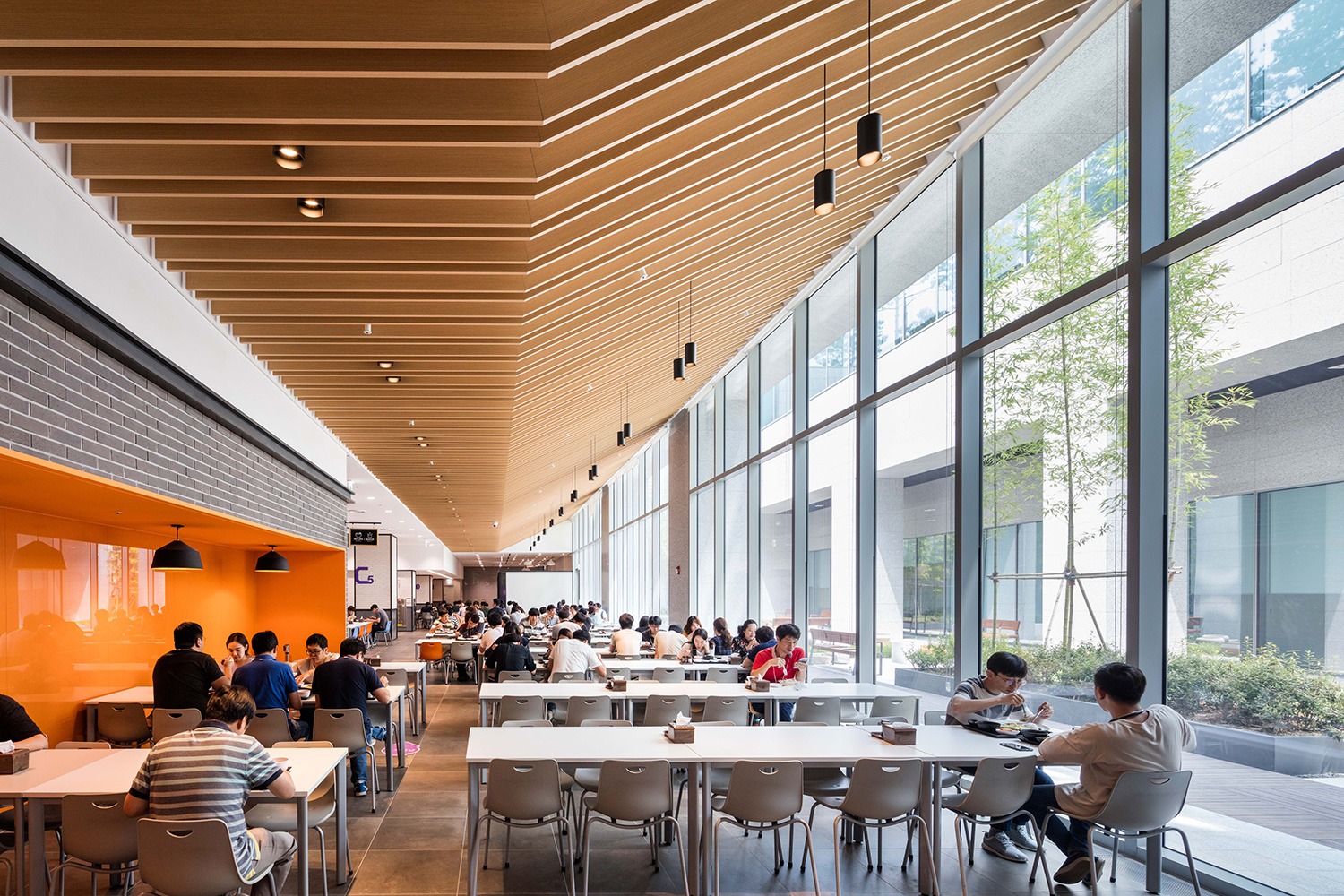
Nature played a prominent role in the design of LG Science Park—both as a way to support the wellness and health of its people and to offer places of respite for the community.
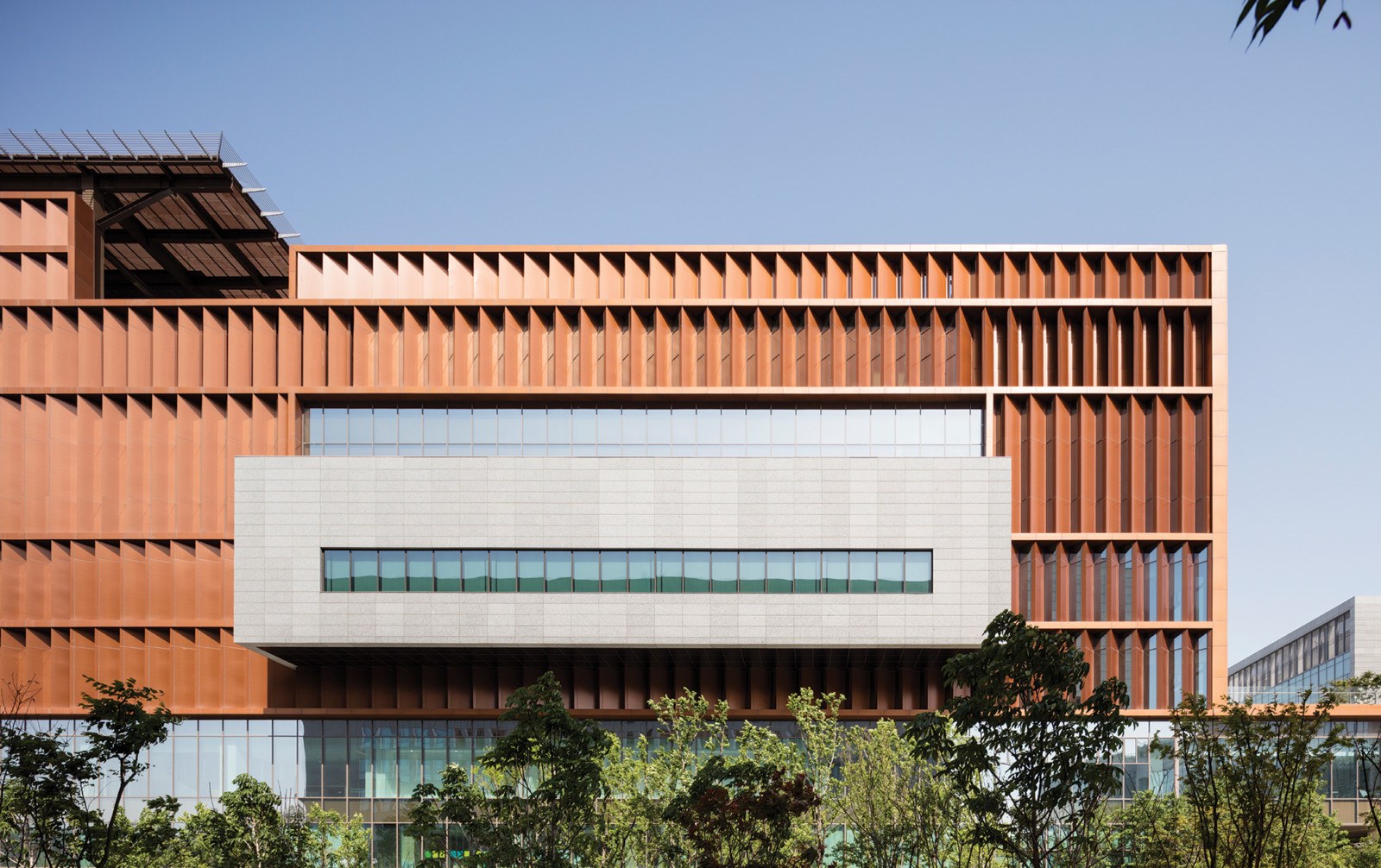
Sustainable, Durable Materials
Building materials, which are as classic and durable as LG’s consumer products, include glazing, natural stone cladding and aluminum mullions. The pale granite natural stone facades of the research buildings contrast with the dark-clad Integrated Support Centre located at the heart of the campus.
Sustainable design strategies for the environmentally friendly campus (LEED Platinum ISC; LEED Silver labs) include a rainwater harvesting system that delivers 100 percent of the irrigation and cleaning water, high-performance cladding, photovoltaic roofs, ground-source heat pumps and a central ice-making plant that reduces peak cooling loads. The targeted reductions for energy use intensity (EUI) compared to the baseline are 88 percent for the ISC and 50 percent for the lab buildings.
